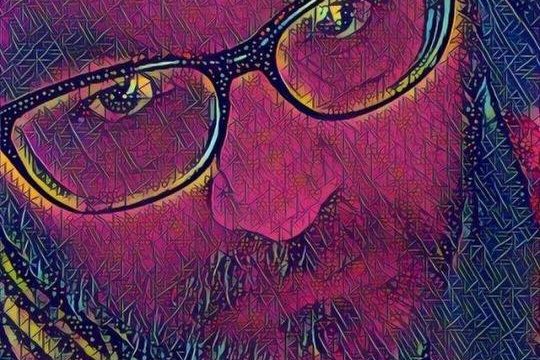NYCO’s Blog has just posted what she calls an e-reprint of some posts by Dancin’ Larry entitled “Talkin’ Organizin’. The posts discuss the community organizing philosophy and tactics of Saul Alinsky. Alinsky literally wrote the book on community organizing, Rules For Radicals, published a year before his death in 1973. The most comprehensive biography of Alinsky is Let Them Call Me Rebel by Sanford Horwitt, the text on which I base this post.
Alinsky created the first modern community organization, The Back of The Yards in Chicago during the 1940’s. Other organizations created by Alinsky were The Woodlawn Organization in Chicago and the Community Service Organization in Los Angeles, both in the 1950’s. In the 1960’s Alinsky decided to concentrate on teaching others to organize, setting up the Industrial Areas Foundation, the first of what have become an integral part of community organizing–national organizing networks that help train organizers and give research and tactical support to community organizations.
Saul Alinsky worked closely with or trained some of the most important activists, writers and politicians of our time. The Back of The Yards group’s success bolstered the organizing work of the nascent AFL-CIO, helping to organize the Chicago stockyards of Upton Sinclair’s “The Jungle” and supporting the efforts of John L. Lewis and Walter Reuther. The Woodlawn Organization stared down the Daley machine, organizing massive voter registration drives. TWO’s leaders were at the forefront of Martin Luther King’s short campaign in Chicago. Cesar Chavez was trained as an organizer by Alinsky’s main assistant Fred Ross at the Community Service Organizaztion.
Even more importantly, thousands of everyday citizens have received the training and support that has allowed them to stand up and fight for their neighborhoods through community organizations that believe, like Alinsky, that democracy is for ordinary Americans.
NYCO made one point on which I would like to elaborate: “One of Alinsky’s celebrated organizing victories happened vs. Kodak in Rochester during the 1960s, if you’re looking for a local angle.” Another local angle was Alinsky’s work in Syracuse during 1965. Syracuse became a test case for the Office of Economic Opportunity (the OEO was the agency that actually fought The War On Poverty) and its philosophy of maximum feasible participation of the poor.
Alinsky was a major critic of the War On Poverty, calling it “a prize piece of political pornography.” Since the beginning of his career, he had fought against social workers and other welfare workers who believed that poor people must be rescued. Alinsky always believed that poor people should be trained to fight for the power that would allow them to do for themselves. Supporters of both philosophies fought for control of the OEO.
SU professor Warren Haggstrom set up the SU Community Action Training Center with over $300,000 in federal funds under the OEO’s Community Action Program. Haggstrom hired Alinsky to hold weekly seminars with students on organizing theory. Alinsky also had his chief aide Fred Ross work full-time in Syracuse, organizing students to go door-to-door surveying residents about their concerns. Interested residents hosted house meetings with their neighbors. Several adjacent blocks would knit the house parties into a neighborhood action committee. The goal was to create a neighborhood action committee in six targeted areas. Eventually the six committees would coalesce together as a powerful organization. The issues that the students and residents organized around were housing conditions, high gas bills and unfair evictions. The survey also initiated a a voter registration component “Register For Power.”
The mayor at the time William Walsh (U.S. Rep. Jim Walsh’s father) protested bitterly to Washington about this program, especially the voter registration drive: “These people go into a housing project and talk about setting up a ‘democratic’ organization–small ‘d’, but it sounds just the same as Democratic–big ‘D’, and in a close election it could be decisive.” The S.U./Alinsky program was also in direct competition with another Community Action Program, the non-threatening Crusade for Opportunity. The Crusade’s finances were controled by City Hall and its goal was to mobilize charitable and civic agencies to work on a case-by-case basis with poor people.
Politicians like Mayor William Walsh put pressure on Washington to eliminate programs that attempted to bypass the local power structure and directly empower grassroots residents. By the summer of 1965, Washington started easing advocates of the “maximum feasible participation of the poor” out of the agency. Syracuse, due to the outspoken nature of Alinsky’s comments, became the symbol of the neutering of the OEO and its Community Action Program. The S.U. program’s funding wsa not renewed after its first year and Professor Haggstrom was fired. The NY Times asked Alinsky if he was disappointed that the Syracuse program was discontinued and he sneered his reply: “Have you ever been to Syracuse?”
The fight over how best to fight poverty in Syracuse is still reflected in the groups that emerged from the two competing Community Action Programs. From the ashes of the Crusade For Opportunity has emerged
PEACE, Inc. (People’s Equal Action and Community Effort, Inc. ) whose mission is detailed on their website: “As one of Central New York’s largest human service agencies, P.E.A.C.E., Inc. works tirelessly throughout the city of Syracuse and surrounding areas to provide programs and services for the whole family, including child and youth services, family and community development, senior services and energy and housing services.”
In 1977, the Board of Urban Ministry, a now defunct organization of inner-city Catholic churches, adopted the S.U./Alinsky template of neighborhood action committees to create a grassroots organization to fight for improved housing conditions on the city’s southside. One year later, that organization was spun off as an independent non-profit agency, Syracuse United Neighbors (SUN). SUN to this day utilizes the confrontional tactics and grassroots leadership that is a hallmark of Alinsky-style organizations. Full disclosure: I am the senior staff organizer for SUN.

Wow! What a history. Thanks!
LikeLike
< HREF="http://democracyforum.blogspot.com/2006/04/bridge-activists.html" REL="nofollow"> Bridge Activists<>
LikeLike